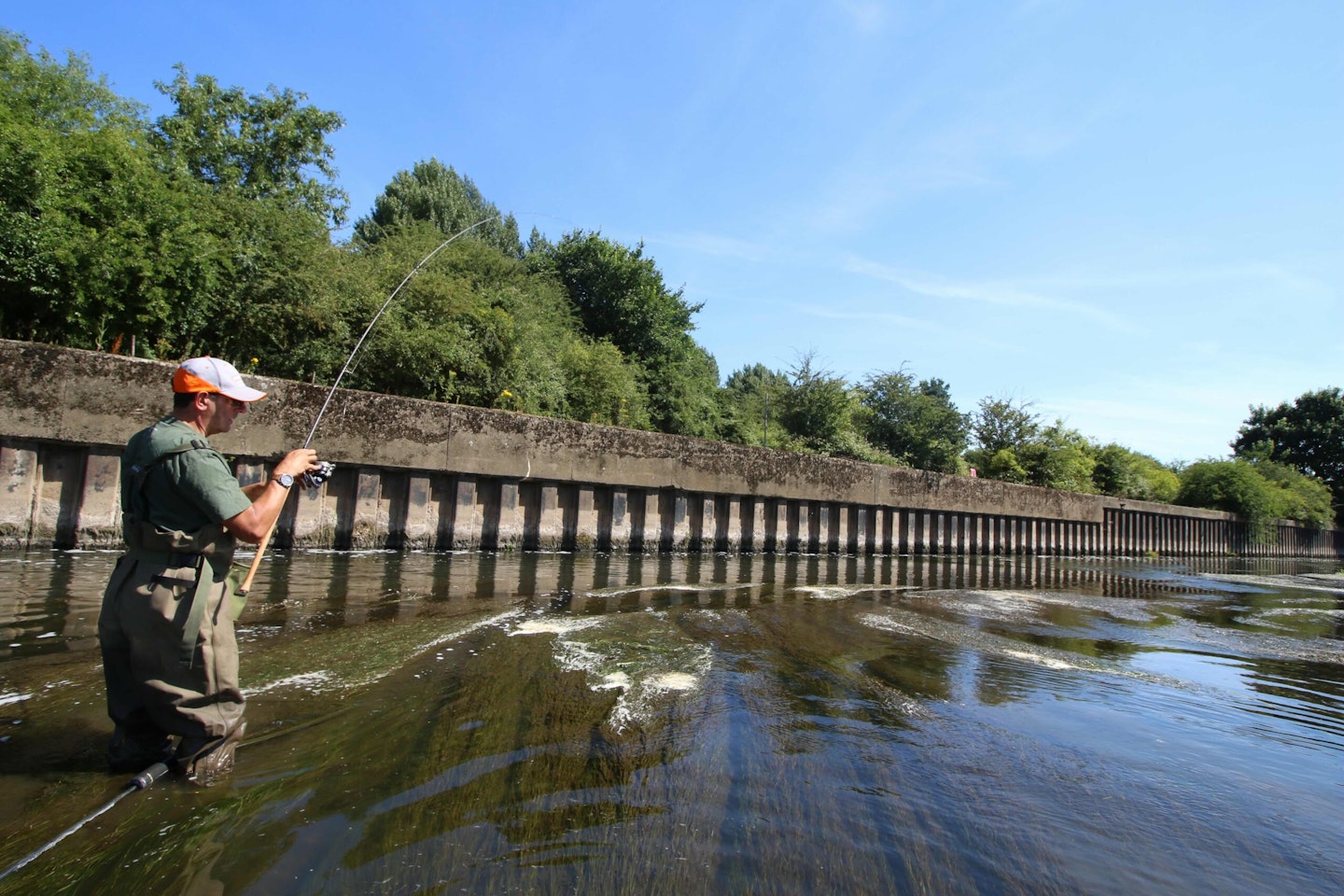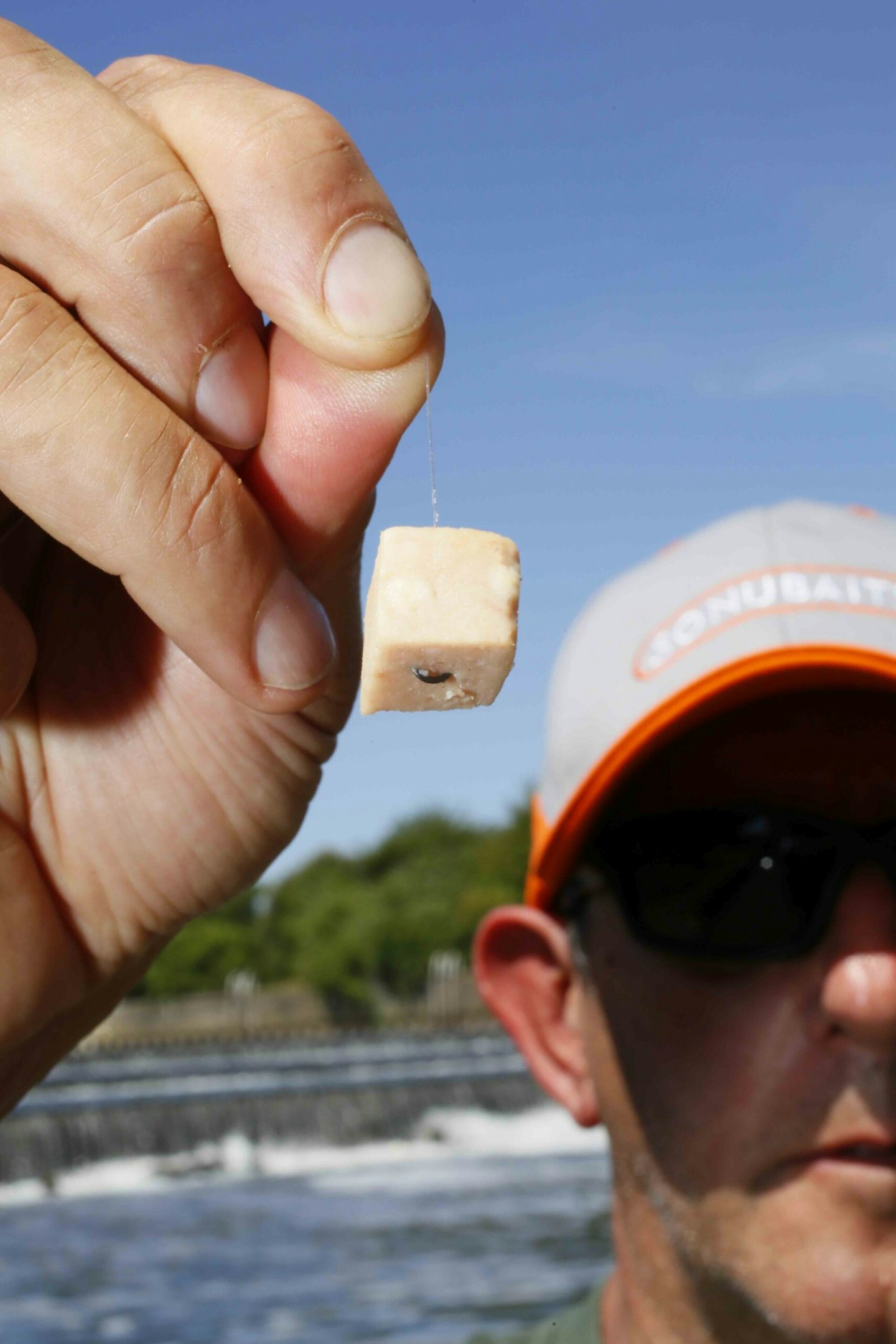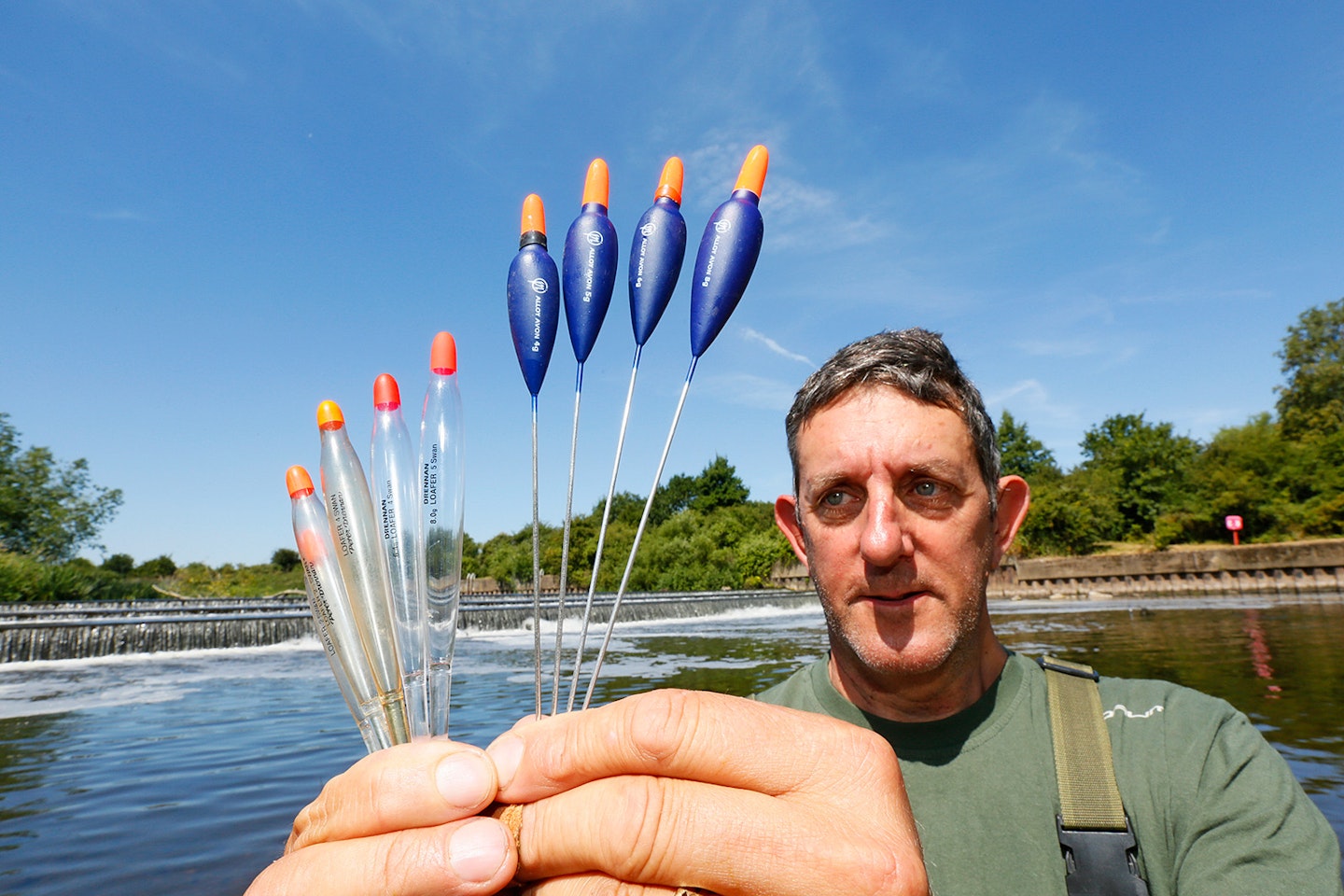The vast majority of the barbel caught in this country are caught on static baits fished in conjunction with either a leger or swimfeeder.
There’s no doubt that this approach is extremely productive, however, there are times, particularly in daylight hours, when this approach can be rather slow and sitting behind motionless rods becomes rather boring!
This is when float fishing really comes into its own and not only is it a pleasant change to watch a float trundling downstream, quite often it can be more productive too.
WANT TO CATCH YOUR FIRST BARBEL? CHECK OUT OUR EXPERT ARTICLE FOR ALL THE TIPS AND TACKLE YOU NEED!

Perfect trotting
A clear run through weed is ideal and to maximise your chances try and select a swim where you can trot the float at least 20 yards, preferably more. My aim when trotting is to try and get the float to move through the swim in as straight a line as possible and if I can hold it back a bit so that it goes slower than the current so much the better.
Don’t be afraid to use a big float as holding the float back is easier with a bigger float that is less likely to pull off the line of your trot through. Few swims have an even depth along the length and you will often find the float drags under on the shallower sections.
On the first few trots keep varying the depth the float is set at and gradually you will build up a picture of the swim.
Then you can either hold back more to help the bait travel over shallow sections or just let the float pull through knowing it is not a bite and let it resume on its way.
GET YOURSELF ONE OF THE BEST BARBEL FISHING RODS BY CHECKING OUT OUR BUYER'S GUIDE.

If in doubt...strike
A bite usually sees the float disappear under and you will gradually get to spot the difference between a bite and the float pulling under as the bait is dragging on the bottom.
As a guide, bites usually see the float disappear more quickly. It might only be a fraction of a second difference but even so as you get accustomed to the way your float is behaving, it becomes quite easy to distinguish a bite... If in doubt strike!
Unlike stick float fishing with small hooks and baits where a flick of the wrist may suffice, a good sweeping strike is the order of the day, particularly if the hook is buried in a piece of luncheon meat.
Hooked fish will often shoot downstream initially but often will then come upstream fairly quickly and it is surprising how much pressure you can exert with 6lb line.
YOU NEED THE RIGHT MAINLINE FOR TROTTING, OUR BUYER'S GUIDE CONTAINS THE BEST AVAILABLE.

Meat when roving
When adopting the roving approach my bait of choice is invariably luncheon meat cut into cubes of about 12mm.
Luncheon meat is very visible and fish can readily see it as it passes downstream. Even on busy stretches of river where legered meat has ceased to be a good bait because the barbel are wary of it when trotted through a swim barbel do not associate it with danger and take it readily.
At the end of the trot the meat will invariably come off the hook fairly quickly as the tackle is retrieved.
This has one advantage and one disadvantage. The advantage is that the meat will continue downstream and might draw fish towards you, the disadvantage is it may also result in fish moving further downstream and eventually they may move out of trotting range, at which point it is time to move swim.
CHECK OUT THIS FANTASTIC GUIDE ON TYING UP A TROTTING RIG FOR BARBEL!

Pellets when static
The main difference in approaches is that with a static approachI am introducing loose feed by hand to draw fish to me. To avoid my bait coming off at the end of the trot I opt for 6mm or 8mm Halibut pelletsrather than luncheon meat and attach them with a latex bait band.
Generally, I feed the same size pellets as I am using on the hook. The key thing is to feed in a manner that ensures your loose feed ends up in the area where you are trotting.
In some shallow swims throwing bait in by hand will work, in others catapulting it upstream gives it more time to sink and land close to you. Other approaches to consider are using a bait dropper or introducing pellets in balls of groundbait.
LOOKING TO CATCH A BARBEL? OUR WHERE TO FISH GUIDEHAS SOME EXCELLENT RIVERS TO TRY!

